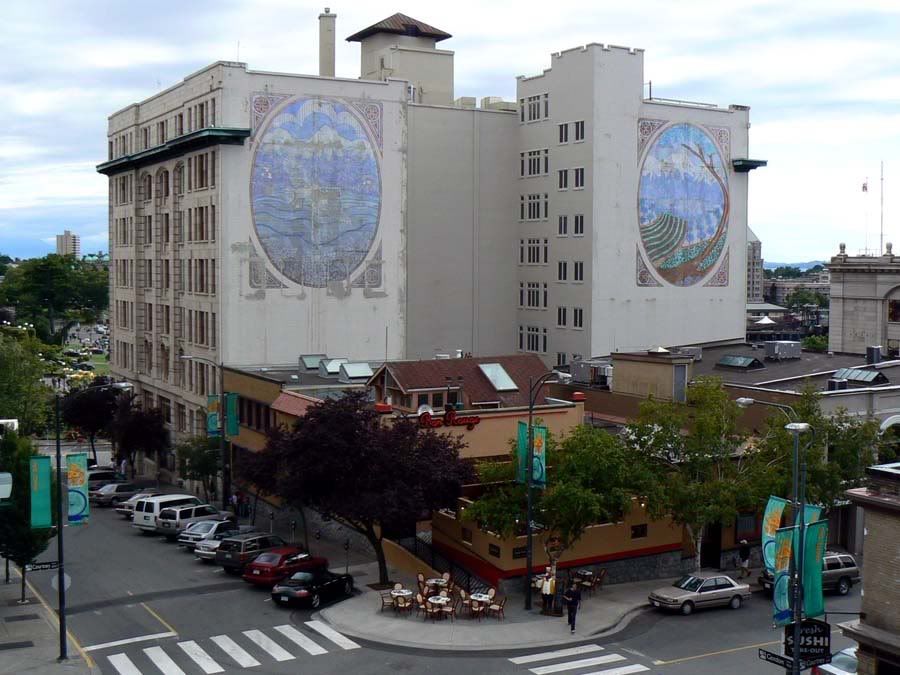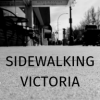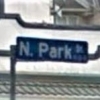
Downtown core area plan
#81

Posted 05 November 2010 - 08:40 PM
#82

Posted 05 November 2010 - 09:10 PM
Nice to see you on here!
This is just so ridiculous.
#83

Posted 16 March 2011 - 10:34 AM
A staff report going to a committee of Victoria council this week recommends allowing greater development density in a large part of downtown.
It's one of several issues identified during a public consultation process on a "Draft Core Area Plan". The development and real estate industries have raised doubts that a 3 to 1 floor-space ratio is enough to encourage the kind of urban development the plan hopes to achieve. The report now proposes increasing the ratio to 4 to 1, in the area between Chatham and Burdett, Douglas and Blanshard; and between Bay and Fort, from Blanshard to Quadra.
As well as tinkering with density requirements the report proposes that Rock Bay's role as an employment centre be enhanced through policies that would restrict any residentrial development in that particular neighbourhood.
The recommendations go to Council's Governance and Priorities Committee on Thursday.
http://www.cfax1070....news&Itemid=155
Can someone please explain to me exactly what floor-space ratio mean? I seem to recall it having something to do with the total floor space of a building in relation to the size of the land the building is on. What are the implications of going from 3:1 to 4:1? Wouldn't a building like the 834 or Juliet have a floor-space ratio of 14:1 as the buildings occupy the entire lot and are 14 stories tall?
#84

Posted 16 March 2011 - 10:45 AM
The Juliet is just over 6:1 if I remember correctly. It is less than 14:1 because it is a slender tower set on a podium. Don't forget the "air" surrounding the tower within the lot is also part of the calculation.
It is helpful to think of the total buildable area as a cube that goes from one end of the lot to the other, like a giant block of clay. Even carving out a small setback on the top floor will reduce your fsr.
#85

Posted 16 March 2011 - 10:55 AM

The building goes right up to the sidewalk. On this side you can see the lightwells "carved" out of the north facade that reduce the fsr. If the building were a perfect cube it would be closer to 9:1 fsr.
FSR is the relationship between the size of the lot and the total buildable area.
With the Juliet, you could make the tower shorter and fatter without changing the fsr. The density could remain the same, like squeezing a balloon.
#86

Posted 16 March 2011 - 11:51 AM
The "above grade" part seems to introduce a lot of wiggle room. Sometimes you'll see new projects in which the ground floor is well below sidewalk level, and the advertised FSR seems to be obviously incorrect. But the ground floor is actually not being figured into the FSR because it's below grade. Or at least that's what I've concluded.Floor space ratio (FSR): Calculated using the gross floor area above grade of all buildings or structures on a lot divided by the total area of the lot (expressed to the nearest decimal). Thus, the larger the FSR, the more the parcel on which it sits is maximized.
Which leads me to ask, how low does the ground floor have to be before it isn't included in the FSR? And how is the grade level determined when part of a building fronts a sloping grade, as the Belmont Building does? Do they average the grade somehow?
Also, apparently the calculation of FSR can vary widely from one city/municipality to the next. So which formula does Victoria use?
#87

Posted 16 March 2011 - 12:08 PM
Is my conclusion correct? Or are only certain types of spaces excluded from the FSR if they are put below grade?Or at least that's what I've concluded.
Also, is it possible to alter the grade level in order to achieve an FSR that complies with the local regulations?
#88

Posted 16 March 2011 - 12:36 PM
It's great that they want to raise development density, but if the Juliet is 6:1 then 4:1 seems low. I guess towers need to get separate approval from city hall to exceed the recommended density?
#89

Posted 16 March 2011 - 12:55 PM
Is my conclusion correct? Or are only certain types of spaces excluded from the FSR if they are put below grade?
Also, is it possible to alter the grade level in order to achieve an FSR that complies with the local regulations?
I'm not sure about the finer aspects. Parking doesn't usually seem to be included. Recall that our efforts to reduce the size of the parking entrances of some buildings met resistance because the recalculation boosted the fsr past what was permitted.
The Falls was an example where there was controversy about parking and fsr.
#90

Posted 16 March 2011 - 01:53 PM
Now I'm wondering if the whole buildings-on-pillars thing is somehow related to that. You know, how some people think the best highrise is one that doesn't have any ground floor whatsoever.
#91

Posted 16 March 2011 - 08:19 PM
Which leads me to ask, how low does the ground floor have to be before it isn't included in the FSR? And how is the grade level determined when part of a building fronts a sloping grade, as the Belmont Building does? Do they average the grade somehow?
FSR is regulated at the local government level, and varies as each LG sees fit. In some places, like Sooke, there is no FSR regulation. In my experience, most municipalities that do FSR calculations omit all floor areas that are more than 1.5 m below the finished grade. When grades slope, typically a line is drawn connecting the two points where the grade is 1.5 m above the finished floor, and all the area 'behind' that line is omitted from the calculation. Average grade is calculated differently in each LG, but is always done with natural grade in order to prevent builders from increasing their building elevation by adding fill. It isn't usually used as part of FSR calculations.
So which formula does Victoria use?
Start here, looking under Floor Space Ratio. Each underlined term is also defined, so it may take a while to comprehend things thoroughly. Victoria uses definitions that are used in the BC Building Code for calculating storeys and areas, and applies them to their FSR regulation. This means that unlike most LGs with which I'm familiar, Victoria uses average grade to determine if floor area is in or out. So either the whole storey counts, or it doesn't.
Also, is it possible to alter the grade level in order to achieve an FSR that complies with the local regulations?
In most cases, yes. I have seen many instances in which retaining walls were used at the rear of the foundation, allowing for sufficient fill to be added such that none of the bottom floor area is included in the FSR, but still permitting large windows and sliding glass doors to be used in one exterior wall. The Victoria definition of 'grade' is not clear on this point, disallowing 'artificial mounds' from being used in calculating average grade, but if I had to make a ruling independent of whatever practice Victoria has been following, I would find that altering grade in order to comply with FSR is permitted.
#92

Posted 24 March 2011 - 06:13 AM
#93

Posted 24 March 2011 - 09:27 AM
Can we all agree that 4:1 is ludicrous? The Atrium, a building loved by most everyone and considered about as "Victorian" of a building as we can get, has a density of 5:1! The 834 is 6:1! Even Councillor Madoff's much loved Belmont Building at Government and Burdett is over 7:1!
In fact, I can't remember any meaningful projects built in downtown Victoria in the last 10 years with a density of 4:1 or less.
Know it all.
Citified.ca is Victoria's most comprehensive research resource for new-build homes and commercial spaces.
#94

Posted 24 March 2011 - 09:59 AM
So the fsr is now approved at 4:1. Am I the only one that thinks that exceptions to this rule will now be rare?
I am hopeful we can make some changes in the November elections.
#95

Posted 24 March 2011 - 10:12 AM
I am hopeful we can make some changes in the November elections.
Agreed.
4:1 seems absurd. I find it counterproductive that as a region with notable housing challenges (homelessness and affordability), Victoria City Hall has put unreasonable caps on density which will only further restrict the supply of housing. It is ridiculous that buildings like the Juliet and 834 are wayyyy outside of the the density guidelines for downtown. We're not talking about Fairfield, we're talking about downtown where the tallest buildings and highest density should be!
The Hudson, which is supposed to be a higher end development, with some very expensive units, is obviously struggling to sell. On the other hand, more affordable developments like Juliet and it appears the 834 are successes. The City needs more density to make it more affordable for people to live here, and we can't achieve this by putting ridiculous caps on downtown density.
#96

Posted 24 March 2011 - 10:13 AM
#97

Posted 24 March 2011 - 10:53 AM
4:1 is as meaningless as 3:1. The only thing is City Hall can claim that it increased density zoning in downtown by 33%. It'll look wonderful on paper, but in reality nothing changes.
The problem is Victorians have a love affair with the NDP. The fact Marianne Alto, a Saanich resident and NDP-er who "campaigned" only in the home stretch of the by-election, was voted in proves how effective the NDP machine is in Victoria. I really believe that unless something drastic happens, Fortin, Madoff, Hunter, Luton, Alto, and Lucas are shoe-ins.Changes will happen in November if incumbents do not run or if there is a single well organized slate seeking to change the council. Anything else will not matter
Know it all.
Citified.ca is Victoria's most comprehensive research resource for new-build homes and commercial spaces.
#98

Posted 24 March 2011 - 11:25 AM
#99

Posted 24 March 2011 - 11:46 AM
I really believe that unless something drastic happens, Fortin, Madoff, Hunter, Luton, Alto, and Lucas are shoe-ins.
Alas, you are probably right.
#100

Posted 24 March 2011 - 07:49 PM
The problem is Victorians have a love affair with the NDP. The fact Marianne Alto, a Saanich resident and NDP-er who "campaigned" only in the home stretch of the by-election, was voted in proves how effective the NDP machine is in Victoria. I really believe that unless something drastic happens, Fortin, Madoff, Hunter, Luton, Alto, and Lucas are shoe-ins.
If there is an NDP shoe-in on Victoria Council, you can expect more of the same kind of non-financial support, if the Liberals form the next provincial government. The "NDP machine" does not seem to be effective at changing the provincial scene.
0 user(s) are reading this topic
0 members, 0 guests, 0 anonymous users



















